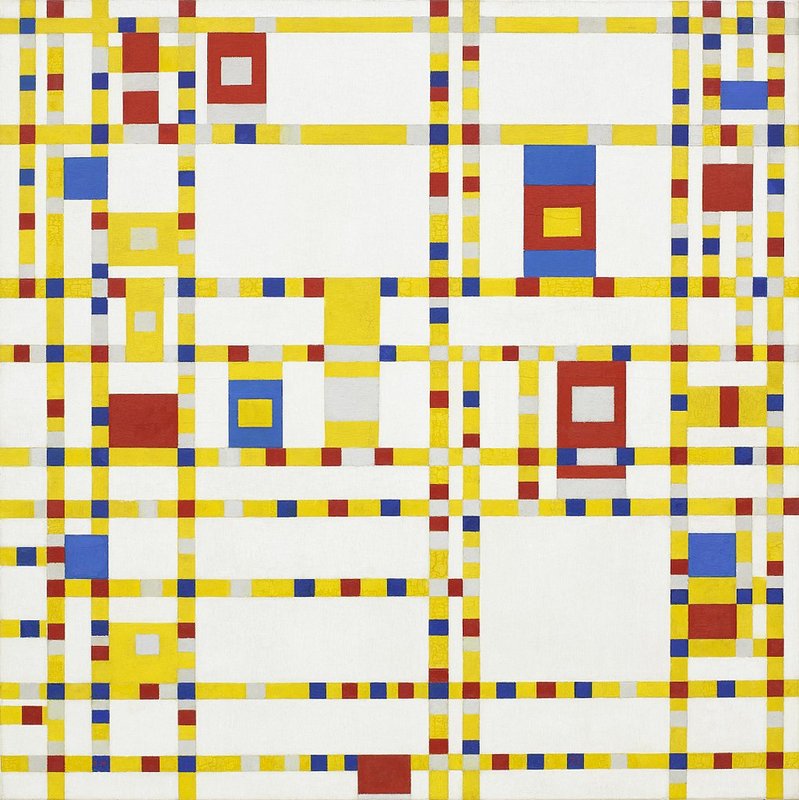2. Broadway Boogie-Woogie by Piet Mondrian
 “Broadway Boogie-Woogie” (1943) by Piet Mondrian from The Museum of Modern art via Wikimedia Commons.
“Broadway Boogie-Woogie” (1943) by Piet Mondrian from The Museum of Modern art via Wikimedia Commons.
As a Dutchman acclaimed for his abstract painting, Piet Mondrian (1872-1944) seemed unlikely to take on New York and its urban form as a subject. Many of his works consisted of vertical and horizontal lines and rectangles with a palette limited to primary colors, black, and gray set against white backgrounds. In doing so, he created a widely influential design aesthetic, a style he dubbed Neo-Plasticism which he adopted after abandoning representational forms in the 1910s.
With war in Europe, Mondrian arrived in New York in 1940. His new home was not only a refuge, but, as with so many other artists, New York also became his muse. The city was a place where his geometric style could represent physical characteristics. In Broadway Boogie-Woogie, his intersecting lines and color rectangles evoke the city’s rectilinear street grid, skyscrapers facades, and the lights of the Great White Way. Completed in 1943, it also turned out to be his swan song as he died the following year while working on a new piece, Victory Boogie-Woogie, which further explored these themes.





